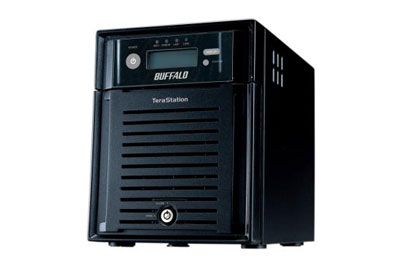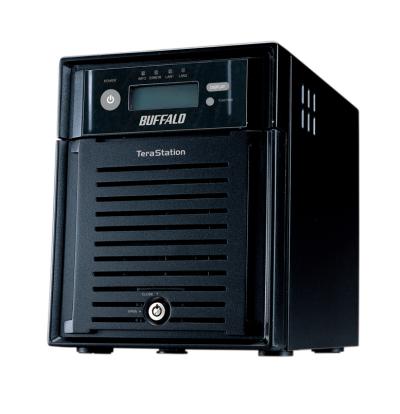Buffalo TeraStation III 2TB review
We've had mixed responses to Buffalo's previous NAS efforts. Can its updated TeraStation impress us?

We weren't expecting much from Buffalo's TeraStation III due to its staid appearance, but were pleasantly surprised by its appealing and well-designed web management interface and generally fast performance. Its slow speeds copying small files is disappointing and the lockable front door could be strengthened, but if you can live with these flaws then the TeraStation is a great NAS.

A NAS device's web management interface doesn't sound particularly glamorous, but it is an important component since, depending on how well designed it is, it can make configuration and maintenance of your NAS either a breeze or a nightmare. Thankfully, Buffalo's redesign left us impressed.
The previous interface, which has been used on all Buffalo NAS devices for the past couple of years now, had all its controls logically organised into a collapsible Windows Explorer-like tree menu along the left hand side of your browser window. As well as looking dated it could be clunky to use since it wasn't AJAX-based. Some tasks, such as assigning user accounts and groups different access permissions to different folders, took longer to complete than necessary, or weren't as intuitive as other NAS devices.

The new AJAX-based interface looks far sleeker and always displays useful information in the top right hand corner, such as the TeraStation's current IP address. The controls have been reorganised into a less bewildering number of categories arranged as a series of tabs running along the top of your browser window. It's less intimidating than both the Buffalo's own older interface as well as other NAS AJAX interfaces, such as the ones included with Synology and QNap NAS devices.
If you're used to the previous interface it can take some getting used to, but it's well-designed so it's worth bearing with. For example, the controls for creating user accounts, assigning them to groups and setting usage quotas is accomplished from a single screen, making it one of the easiest and quickest to use we've seen. Creating more than a few user accounts can be tedious in other NAS administration interfaces, but multiple accounts can be created fairly quickly using a text-based interface. A graphical interface would have been even better, but it's still useful to have. Active Directory support is present too.
Get the ITPro daily newsletter
Sign up today and you will receive a free copy of our Future Focus 2025 report - the leading guidance on AI, cybersecurity and other IT challenges as per 700+ senior executives
-
 Google faces 'first of its kind' class action for search ads overcharging in UK
Google faces 'first of its kind' class action for search ads overcharging in UKNews Google faces a "first of its kind" £5 billion lawsuit in the UK over accusations it has a monopoly in digital advertising that allows it to overcharge customers.
By Nicole Kobie Published
-
 Darktrace unveils tailored AI models with a twist for its cybersecurity agent
Darktrace unveils tailored AI models with a twist for its cybersecurity agentNews Darktrace has announced new AI models for its agentic AI security tool, but it's taken a novel approach to tackle hallucinations.
By Rory Bathgate Published
-
 This tech company wants to pay staff to look after their mental and physical wellbeing
This tech company wants to pay staff to look after their mental and physical wellbeingNews Hot on the heels of its four-day week trial, tech company Thrive is offering staff new incentives to take care of their mental and physical wellbeing.
By Ross Kelly Published